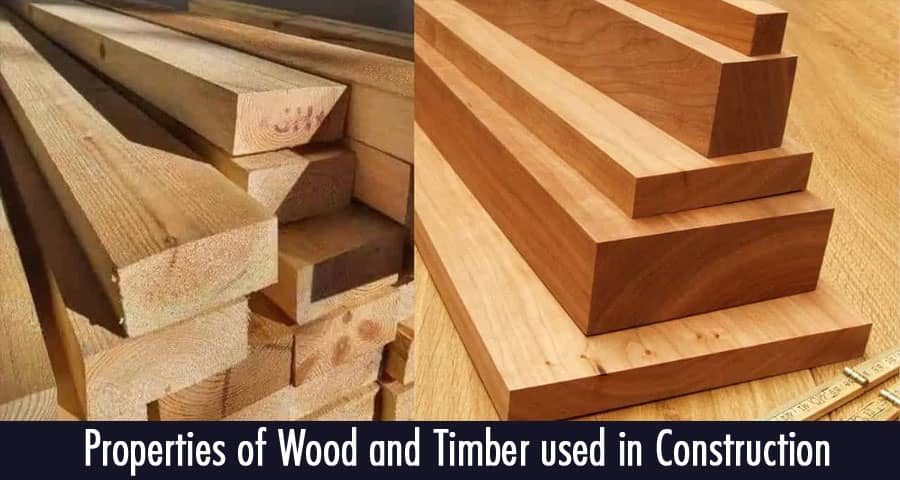Top 5 Properties of Wood and Timber used in Construction

Wood and timber have been essential building materials for centuries, and their popularity in construction projects endures to this day. Their unique properties make them versatile and highly suitable for various applications in the construction industry.
Strength and Load-Bearing Capacity
One of the primary reasons for using wood and timber in construction is their impressive strength-to-weight ratio. Wood is a natural composite material made of strong cellulose fibers embedded in a matrix of lignin, which provides rigidity and support. Timber, derived from larger trees, retains these inherent qualities.
Timber's load-bearing capacity is particularly significant in structural applications. It can efficiently support heavy loads while remaining relatively lightweight. This property makes wood and timber ideal for constructing beams, columns, and frames in various buildings.
Renewability and Sustainability
Wood and timber are renewable resources, making them environmentally friendly choices for construction projects. Sustainable forestry practices ensure responsible harvesting and replanting, ensuring a continuous supply of wood for the future.
Choosing wood as a building material reduces the carbon footprint of construction projects. Trees absorb carbon dioxide during their growth, acting as a carbon sink. Using wood in construction helps sequester carbon, mitigating the impact of greenhouse gases on the environment.
Thermal and Acoustic Insulation
Wood and timber possess excellent thermal and acoustic insulation properties. They have lower thermal conductivity compared to materials like steel or concrete, which means they are better at preventing heat transfer. As a result, wood-framed buildings often offer natural insulation, keeping interiors cooler in hot weather and warmer in cold weather.
Moreover, wood's cellular structure helps dampen sound vibrations, making it an effective material for reducing noise transmission between rooms or from external sources. Timber walls and floors contribute to a quieter and more comfortable living or working environment.
Versatility and Aesthetics
Wood and timber come in a wide variety of species, each with its unique appearance and characteristics. This vast range of choices allows architects and designers to create aesthetically pleasing structures with natural beauty and warmth.
Wood's versatility enables it to be shaped, carved, and joined in numerous ways, giving rise to intricate designs and architectural details. From rustic log cabins to modern timber-framed skyscrapers, wood and timber can adapt to any architectural style, offering unparalleled design flexibility.
Durability and Longevity
When properly maintained and protected, wood and timber can exhibit exceptional durability and longevity. Many historical wooden structures stand as a testament to their ability to withstand the test of time. Timber's natural resistance to corrosion and decay makes it a reliable material, especially when treated with preservatives.
Advancements in wood treatment technology have further enhanced its resistance to fire, insects, and decay, increasing its lifespan significantly. Regular maintenance, including sealing and staining, can extend the life of wood and timber structures even further.
Conclusion
Wood and timber continue to hold a prominent place in the construction industry due to their remarkable properties. Their strength, sustainability, insulation capabilities, aesthetic appeal, and longevity make them indispensable materials in various construction projects. As architects and engineers seek eco-friendly and versatile solutions, wood and timber will undoubtedly remain at the forefront of modern construction practices.
FAQs
Is wood a suitable material for tall buildings?
Yes, with proper engineering and design, wood and timber can be used in tall buildings, as demonstrated by several successful timber skyscrapers.
How long can wooden structures last?
Well-maintained wooden structures can last for several decades to centuries, depending on the type of wood, treatment, and environmental conditions.
Can wood be used in wet or humid environments?
Yes, certain types of wood and timber are naturally more resistant to moisture and can be used in wet or humid environments.
Is wood a fire-safe material?
While wood is combustible, it can be treated with fire-retardant chemicals to improve its fire resistance, making it a viable choice for construction.
What is the carbon footprint of using wood in construction?
Using wood in construction can lead to carbon sequestration, which means it can have a positive impact on reducing carbon emissions when sourced responsibly.
